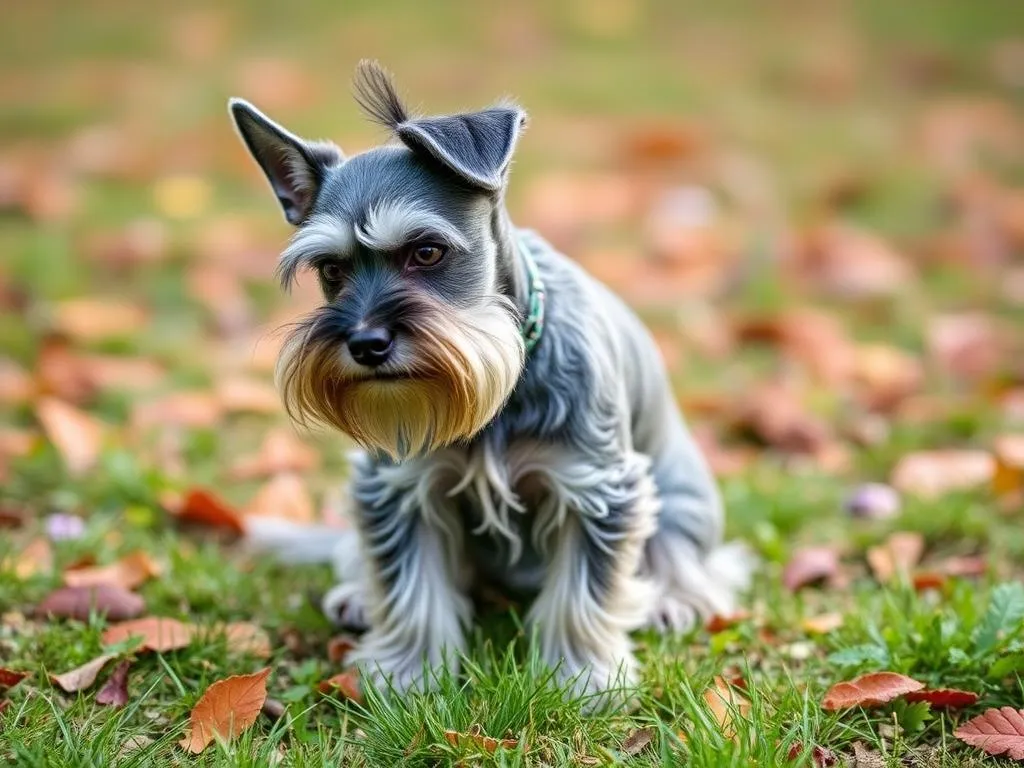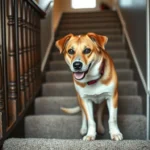
Training a Miniature Schnauzer can be an incredibly rewarding experience, both for you and your furry friend. This breed is known for its spirited personality and intelligence, making it essential to implement effective training techniques. In this guide, we will explore various aspects of training a Miniature Schnauzer, from understanding the breed to addressing common behavioral issues.
Understanding Miniature Schnauzers
Breed Characteristics
Miniature Schnauzers are small yet energetic dogs, typically weighing between 11 to 20 pounds. They possess a distinctive wiry coat and a lively demeanor that encapsulates their playful nature. These dogs are known for their curiosity and intelligence, which makes them highly trainable when approached correctly.
Temperament and personality traits: Miniature Schnauzers are often described as friendly, alert, and eager to please. They tend to form strong bonds with their families and can be quite affectionate.
Energy levels and exercise needs: This breed is moderately energetic, requiring daily exercise to keep them healthy and happy. Regular walks, playtime, and mental stimulation are crucial to prevent boredom and destructive behavior.
Intelligence and trainability: Miniature Schnauzers are intelligent dogs that thrive on learning new commands and tricks. Their eagerness to please makes them responsive to training methods that utilize positive reinforcement.
Common Behavioral Traits
Typical behaviors in puppies vs. adult Miniature Schnauzers: Puppies are generally more playful and less focused, while adult Miniature Schnauzers display more steadiness. However, both stages require attention and proper training to develop good behavior.
Socialization tendencies: Early socialization is crucial for Miniature Schnauzers. They can be wary of strangers and other dogs if not adequately socialized. Introducing them to various environments, people, and animals can foster a well-rounded temperament.
Common behavioral issues: Miniature Schnauzers can exhibit common issues such as excessive barking and stubbornness. Understanding these behaviors is the first step in addressing them effectively.
Preparing for Training
Essential Training Equipment
Before diving into training, it’s essential to gather the necessary equipment. Here are some items you will need:
- Collars and leashes: A comfortable collar and a sturdy leash are vital for safe training sessions.
- Treats and toys: Positive reinforcement is key, so having delicious treats and engaging toys will motivate your Miniature Schnauzer during training.
- Training aids: Consider using a clicker for marking desired behaviors or training mats to designate specific training areas.
Creating a Training Environment
Establishing the right environment for training can significantly impact your Miniature Schnauzer’s learning process.
- Ideal locations for training sessions: Choose a quiet area in your home or a calm space in a park to minimize distractions during training.
- Minimizing distractions: Turn off the TV, silence your phone, and remove other pets during training sessions to help your Miniature Schnauzer focus on you.
- Setting a consistent training schedule: Training should be a regular part of your dog’s routine. Consistency helps reinforce learning and builds a strong bond of trust between you and your dog.
Basic Commands Training
Teaching ‘Sit’
Teaching the ‘sit’ command is one of the foundational steps in training your Miniature Schnauzer.
- Begin with your dog standing in front of you.
- Hold a treat above their nose and slowly move it back over their head.
- As they follow the treat, their bottom should naturally lower to the ground.
- Once they sit, say “Sit” and immediately reward them with the treat and praise.
Common mistakes to avoid: Don’t push down on your dog’s back; this can create confusion. Instead, use the treat to guide them naturally into the position.
Teaching ‘Stay’
The ‘stay’ command is incredibly important for your dog’s safety and control.
- Begin with your Miniature Schnauzer in the ‘sit’ position.
- Open your hand in front of you, palm towards them, and say “Stay.”
- Step back a few paces. If they stay, immediately reward them.
- Gradually increase the distance and duration of the stay before rewarding.
Techniques to reinforce the command: Use varying durations and distances to keep your dog engaged. Always reward them for successfully following the command.
Teaching ‘Come’
The ‘come’ command is essential for recall, especially when your Miniature Schnauzer is off-leash.
- Start indoors or in a secure, enclosed area.
- Say your dog’s name followed by “Come” in an enthusiastic tone.
- Use a treat to encourage them to come towards you.
- Once they arrive, reward them generously and praise them.
Safety tips when practicing this command outdoors: Always practice in a secure area first. Use a long line if outdoors to help manage your dog, ensuring they cannot run off while learning.
Teaching ‘Leave It’
The ‘leave it’ command is crucial for keeping your Miniature Schnauzer safe from harmful objects.
- Present a treat in one hand while keeping the other hand closed.
- When your dog tries to get the treat, say “Leave it.”
- Once they stop trying, reward them with a treat from your other hand.
- Repeat this exercise with various objects to solidify their understanding.
Techniques to ensure understanding: Gradually increase the difficulty by using more tempting items and practicing in different environments.
Advanced Training Techniques
Crate Training
Crate training can be a valuable tool for both you and your Miniature Schnauzer.
Benefits of crate training: A crate provides a safe space for your dog, aids in housebreaking, and can help prevent anxiety during separation.
Step-by-step crate training process:
1. Introduce the crate as a positive space. Place treats and toys inside.
2. Encourage your dog to enter the crate voluntarily.
3. Gradually increase the amount of time they spend inside while you remain nearby.
4. Begin closing the door for short periods, rewarding them for calm behavior.
Leash Training
Proper leash manners are essential for enjoyable walks.
Importance of proper leash manners: This ensures a safe walking experience for both you and your Miniature Schnauzer.
Techniques for loose-leash walking:
1. Use a short leash and keep your dog close to your side.
2. When they pull, stop walking, and wait for them to return to your side before continuing.
3. Reward them for walking calmly beside you.
Socialization with Other Dogs and People
Socialization plays a vital role in training your Miniature Schnauzer.
Importance of socialization: Early socialization helps prevent behavioral issues and fosters confidence.
Tips for safe and effective socialization experiences:
– Introduce your dog to various environments, including other pets and people.
– Use positive reinforcement to reward calm behavior around new experiences.
– Attend puppy classes or dog parks for structured socialization.
Addressing Behavioral Issues
Barking
Understanding the reasons behind barking is crucial for reducing excessive barking.
Understanding why Miniature Schnauzers bark: They may bark to alert you, seek attention, or out of boredom.
Techniques to reduce excessive barking:
– If barking is attention-seeking, ignore the behavior until your dog calms down.
– Reward quiet behavior with treats and praise.
– Provide sufficient mental and physical stimulation to prevent boredom.
Stubbornness and Independence
Stubbornness can sometimes arise in Miniature Schnauzers, often due to their independent nature.
Identifying signs of stubborn behavior: This may include ignoring commands or refusing to follow through with tasks.
Strategies to encourage compliance:
– Use high-value treats that your dog loves as motivation.
– Keep training sessions short and fun to maintain their interest.
– Consistently reinforce commands and behaviors.
Separation Anxiety
Separation anxiety can affect Miniature Schnauzers if not addressed early on.
Signs of separation anxiety: Excessive barking, destructive behavior, or attempts to escape when left alone can indicate anxiety.
Tips for alleviating anxiety during training:
– Gradually increase the time your dog spends alone.
– Provide engaging toys to keep them occupied during your absence.
– Create a calming environment with familiar scents and soothing sounds.
Maintaining Training Consistency
Importance of Consistency
Consistency in training is essential for your Miniature Schnauzer’s success.
Why consistent commands and routines matter: Using the same commands and signals helps your dog understand what you expect from them.
How to involve all family members in training: Ensure everyone in your household uses the same commands and training techniques to avoid confusion.
Repetition and Reinforcement
Repetition and positive reinforcement are crucial in the training process.
The role of positive reinforcement in training: Rewarding good behavior encourages your Miniature Schnauzer to repeat those behaviors.
How to effectively use treats and praise: Use treats for immediate rewards and verbal praise for encouragement throughout training sessions.
Continuing Education and Advanced Skills
Enrichment Activities
Engaging your Miniature Schnauzer in enrichment activities can enhance their training experience.
Ideas for mentally stimulating games and activities: Puzzle toys, hide-and-seek, and scent games are excellent ways to challenge their minds.
Importance of physical exercise in training: Regular exercise not only improves physical health but also helps reduce behavioral issues.
Advanced Commands and Tricks
Teaching advanced commands and tricks can create a stronger bond between you and your Miniature Schnauzer.
Overview of fun tricks to teach: Consider teaching tricks like roll over, play dead, or spin. These tricks can be both entertaining and mentally stimulating.
Benefits of teaching advanced commands for bonding: Mastering new skills together can boost your dog’s confidence and enhance your relationship.
Conclusion
Training a Miniature Schnauzer requires patience, consistency, and a positive approach. By understanding their unique characteristics and addressing specific behavioral issues, you can create a strong bond with your furry friend. Remember to celebrate your training successes, no matter how small, and enjoy the rewarding journey of training your Miniature Schnauzer!









